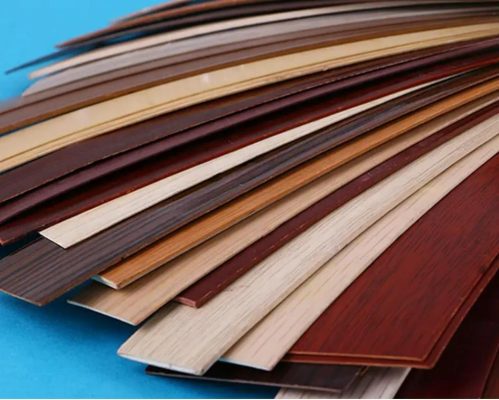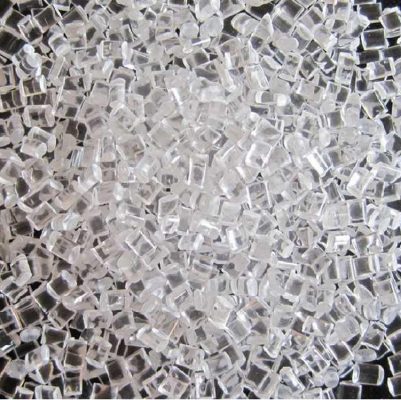When it comes to edge banding materials, two of the most popular options are ABS (Acrylonitrile Butadiene Styrene) and PVC (Polyvinyl Chloride). While both materials are commonly used in various industries, particularly in furniture and cabinetry, ABS tends to be more expensive than PVC. But what makes ABS costlier, and what factors influence this price difference? Let’s dive into the key reasons behind the price gap and what it means for manufacturers and consumers alike.
1. Material Composition and Manufacturing Process
One of the main reasons ABS is more expensive than PVC lies in the raw materials used and the complexity of the manufacturing process.
-
ABS is made from a combination of acrylonitrile, butadiene, and styrene. These materials need to be carefully synthesized and processed, which requires a more precise and energy-intensive manufacturing process. Additionally, ABS has superior chemical and thermal resistance properties due to the unique properties of its components. This increased processing time and higher cost of raw materials contribute to its higher price.
-
PVC, on the other hand, is primarily made from salt and natural gas, making it more cost-effective to produce. The manufacturing process for PVC is relatively simple, which keeps the overall costs lower.
2. Durability and Performance
ABS offers superior durability and impact resistance compared to PVC. This means that ABS edge banding tends to be more durable and resistant to scratches, cracks, and fading, making it a better choice for high-traffic areas or environments exposed to wear and tear. Its higher heat resistance and better resistance to chemicals also play a role in its increased price, as manufacturers have to pay for these added benefits.
In contrast, while PVC is durable, it is more prone to warping and can become brittle over time when exposed to extreme temperatures. This difference in performance is often reflected in the price disparity.
3. Aesthetic Appeal and Flexibility
ABS edge banding has a more appealing aesthetic due to its glossy finish and ability to be more easily molded into different shapes and textures. It also holds paint and other coatings better, allowing for a higher-quality finish that is often preferred for premium furniture and cabinetry.
In addition, ABS can be made in a wider variety of colors, patterns, and textures, making it a favorite choice for manufacturers looking to achieve a high-end look. PVC, while it can be molded into various designs, typically offers fewer options for aesthetics, making it a more affordable choice for budget-conscious projects.
4. Environmental Considerations
Although both ABS and PVC can be recycled, ABS is considered more environmentally friendly in certain cases. The manufacturing process of PVC involves the use of chlorine, which can release harmful by-products during production. The disposal and incineration of PVC can also lead to the release of toxic chemicals like dioxins.
On the other hand, ABS is regarded as a safer material in terms of environmental impact, leading to a potentially higher cost in an increasingly eco-conscious market. Companies focusing on sustainability may be willing to pay the higher price for ABS to meet consumer demand for greener options.
5. Market Demand and Applications
The demand for ABS products is growing, especially in the automotive, electronics, and furniture industries. ABS’s premium performance characteristics make it the material of choice for manufacturers who require higher quality and more durable edge banding. The higher demand in premium markets contributes to the increased cost of ABS.
PVC, on the other hand, is often used for budget-friendly applications, where durability is less of a concern. As a result, PVC is more prevalent in the mass-market segment, leading to economies of scale that drive its price lower.
Conclusion: Is ABS Worth the Extra Cost?
Ultimately, the decision between ABS and PVC depends on your specific needs, budget, and the intended application. If you’re looking for a material that offers superior durability, aesthetics, and overall performance, ABS may be the right choice despite the higher cost. However, if you’re working on a project where cost-efficiency is a primary concern and you can compromise slightly on performance, PVC remains a solid option.
As a manufacturer or consumer, understanding the trade-offs between these materials can help you make an informed decision. While ABS may be more expensive, its long-lasting quality and versatility may justify the additional cost, especially for high-end applications where the final product’s appearance and durability are paramount.
Final Thoughts
In the world of edge banding, both ABS and PVC have their distinct advantages and serve different needs. For companies looking to provide premium products that stand the test of time, investing in ABS edge banding is a smart move despite the higher initial cost. However, PVC remains a popular choice for budget-conscious projects where functionality and cost-effectiveness are the main priorities.
Remember: When selecting the material for your edge banding, consider not only the upfront cost but also the long-term performance and aesthetic goals of your project. Whether you choose ABS or PVC, each material has its own strengths that can cater to a variety of design and manufacturing needs.

